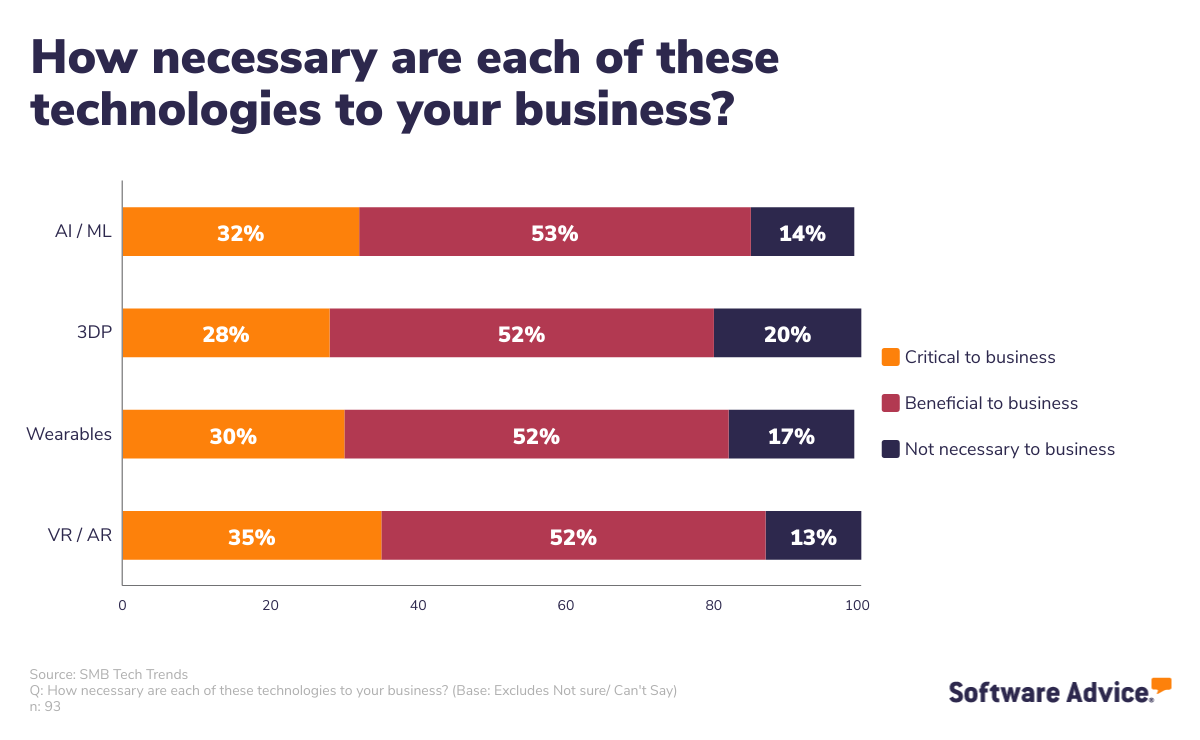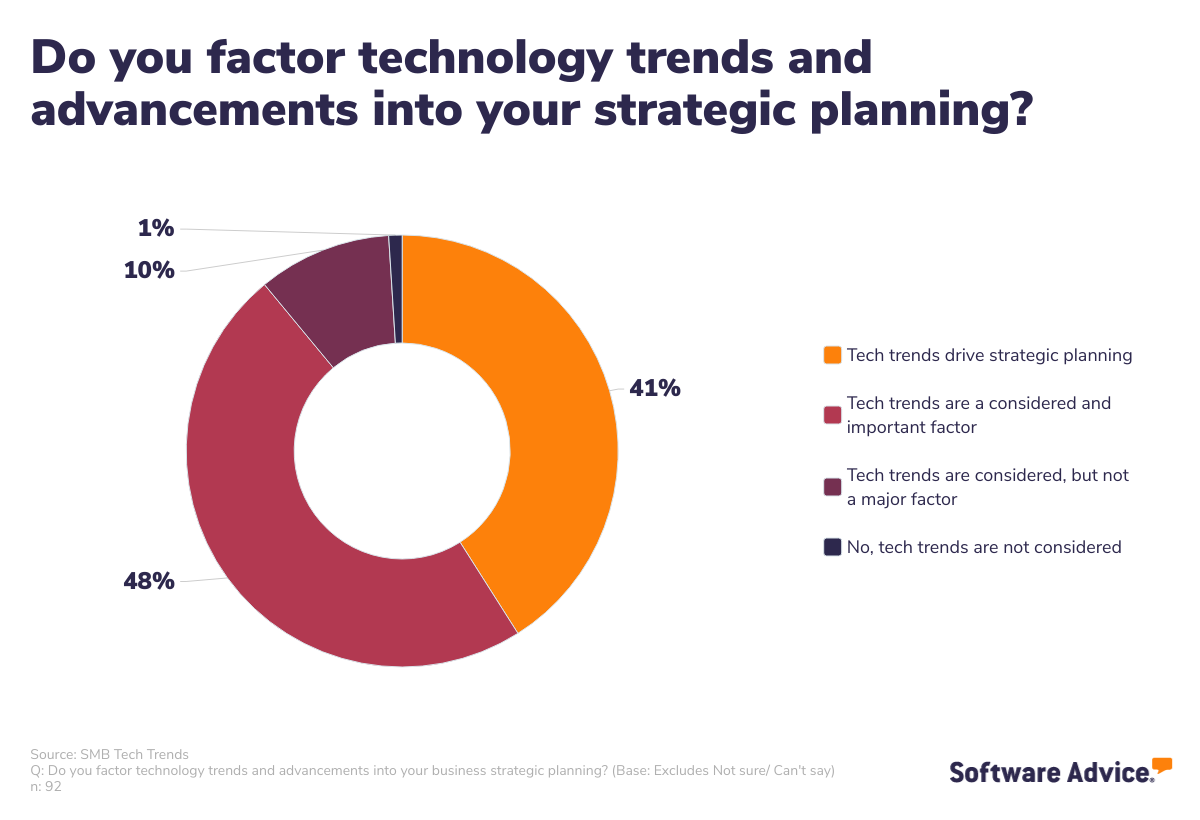Healthcare Market Predictions for 2022 and Beyond
The past two years have seen some of the biggest market disruptions for healthcare providers and organizations in living memory, which means every medical provider has a lot more information to sift through these days when it comes to picking out the best tech to invest in for their practices and patients.
When you consider the surfeit of tech innovations, plus the massive additional workloads healthcare workers are dealing with due to the pandemic, it’s easy to see how decision-makers in healthcare organizations can become overwhelmed. But independent practices and hospitals have to stay on the cutting edge if they want to provide the best possible care to their patients while ensuring their business also thrives.
The pandemic reminded us that it’s a dangerous game to try and predict with certainty what the future holds, but we can look to current healthcare trends to see what technologies may become the most widely adopted, beneficial, and necessary tools of the coming years.
To that end, Gartner ran a global survey of 93 healthcare organizations with no more than 500 employees to understand their strategic planning around tech adoption (methodology below).
What’s beneficial today will be critical tomorrow
In our survey, we asked healthcare respondents how necessary certain technologies were to their current business. What we found had interesting implications for future-facing practices.

Four technologies were significantly more beneficial to healthcare organizations right now than they were critical:
What’s interesting about this data is that healthcare experts anticipate these technologies will become increasingly critical to practices in the coming years as they enable digital evolution, better virtual care, and more streamlined collaboration across care teams (link available to Gartner clients).
Let’s take a closer look at each of these technologies to see how they’re being used today, and how they may be used tomorrow.
Artificial intelligence and machine learning will drive better health outcomes in 2022
AI and machine learning are already being used to great effect in a few ways, including things like decision support systems, chatbots for telehealth, and predictive analytics, so that explains why over half of our survey respondents said this technology has already proven beneficial to their practices.
But what does the future hold for AI in healthcare technology? One application that has caught the attention of Gartner analysts is microbiome medical analysis.
“Microbiome” references the variety of micro-organisms (viruses, fungi, bacteria, etc.) that outnumber cells in the human body more than five times over. Evidence is growing to support the idea that our microbiome has a major impact on factors that determine our overall health.
With AI-empowered systems to help catalog, analyze, and create customized recommendations around individual microbiomes, the potential for this technology application is massive.
But how can small healthcare organizations take advantage of AI/ML today? By strategically investing in existing software systems that have already integrated this tech into their operating systems. Things like chatbots and intelligent decision support systems are already widely available, so make sure your EHRs and patient portals are equipped with these tools today.
Learn more about artificial intelligence in healthcare:
Use Patient Preference to Improve Patient Care Through Technology
3 Benefits of Artificial Intelligence in Healthcare You Should Know About Right Now
3D printing or additive manufacturing will make high-level care more accessible in 2022
The healthcare industry has already established itself as one of the top adopters of 3D printing and additive manufacturing technology thanks to applications such as 3D-printed pre-surgery anatomical models, implants, and prosthetics.
These uses for additive manufacturing will continue to grow and iterate as they are incredibly helpful to patients, but one area of 3DP that we’re starting to see more focus placed on is bioprinting.
Through this technology, healthcare workers can produce living tissue such as bone, blood vessels, and maybe one day even whole organs to be used in a variety of medical situations. Right now, bioprinting is primarily being used to aid researchers in pharmaceutical testing; however, some researchers have successfully created bone grafts and certain organs using this technology.
Again, bioprinting is a fairly cost-prohibitive technology to invest in for a lot of practices, but that doesn’t mean all 3D printing tools are out of bounds. Specialists like dentists and podiatrists are already using 3D printing and additive manufacturing in their daily practice to provide patients with custom-fitted devices on the spot.
If you’re ready to find 3D printing hardware and software that works for you and fits in your budget, start by connecting with our advisors to learn about your options.
Wearables will become even more refined in 2022
Medical wearables are among the most interesting healthcare trends because, thanks to popular devices from brands like Apple, Google, and Fitbit, there is more awareness (and therefore interest) on behalf of users, consumers, and patients.
When we talk about medical-grade wearables, though, we get quite a bit more niche. While there are already a variety of tools on the market for managing various health conditions, one futuristic application in the digital health space worth keeping an eye on are nanosensors.
The application of nanotechnology to medical wearables is still in the experimental stage, but there are a few commercial applications currently on offer. One notably exceptional breakthrough came just a few weeks ago when researchers at the Wexner Medical Center in Ohio announced a breath analysis test that accurately identified COVID-19 in patients. The test uses nanosensors to identify certain biomarkers that indicate active infection.
While nanosensors are an incredibly niche tech at the moment, wearable technologies that apply to a broader range of specialties are already ubiquitous. General practitioners can take advantage of the widely popular commercial wearable devices like Apple Watch and Fitbit to encourage patients to engage full-time with their health.
Read our recent survey report on patient preferences around wearables and remote monitoring devices here: What You Don’t Know About Medical Wearable Devices and Remote Patient Monitoring—But Should.
Virtual or augmented reality will make delivery of care easier in 2022
Remote patient monitoring and care was already trending up before the pandemic hit, thanks to telehealth and telemedicine tools that made it easier for patients and doctors to connect wherever they were. But since the onset of the COVID-19 pandemic, the demand for this technology has blown up.
According to Gartner:
“Healthcare providers are shifting from leveraging virtual care as a substitution to in-person care to identifying new virtual care business models and transforming the entire clinical care journey.”
One way they’re doing that is by using immersive technologies for care delivery. Enter virtual and augmented reality.
With VR/AR, we can enhance the collaborative aspect of all types of care, whether it’s used between patients and doctors or among remote care teams. This technology is already being applied in a few interesting ways. For example, XRHealth is using virtual reality to provide mental health therapy to patients in their homes.
In fact, VR and AR are becoming more and more popular as a therapy tool to treat a variety of diagnoses, including PTSD, OCD, phobias, and anxiety. VR/AR systems have a fairly low cost of entry, so most mental health practices can get in on this trend right away.
Chat with an advisor now to get a list of VR/AR systems that fit your needs.
Technology trends will shape the future for healthcare organizations
There are, of course, plenty of other exciting and fascinating healthcare trends in development right this minute. So even though these four are set to become increasingly more critical over the next few years, it’s almost a guarantee that we’ll see unexpected market trends or innovations crop up to change the way we do things.
We asked our survey respondents if they factor technology trends and advancements into their business strategic planning, and the answer was a resounding “yes.”

That tells us that, regardless of the specific technology in question, innovation will continue to drive the way we deliver care to our patients for years to come.
While all of the technologies discussed in this report are high-level (and very expensive), there are smaller-scale versions available to independent practices and smaller organizations. Wise decision makers should get a feel for which tech trends make sense for their practices so that they’ll be poised to adopt and deploy these innovations as soon as they become more commonplace.
SMB Tech Trends Survey Methodology
Gartner’s 2021 Top Technology Trends survey was conducted to identify the technology needs, challenges, and trends for small businesses to establish Digital Markets as the premier technology information source for small business leaders.
The research was conducted online from August through September 2021, among 1,000 respondents from small enterprises (organizations with between 2 and 500 employees and annual revenue between $5 million and $250 million) in the U.S., the U.K., Canada, and Australia within the Manufacturing & Natural Resources, Communications, Media & Services, Education, Retail, Banking & Securities, Healthcare Providers, Construction and Hospitality industries. Respondents were narrowed down to 93 Healthcare Organizations for the purpose of this report.
Respondents were required to be involved in the technology purchasing decisions of the SME organization and hold a manager-level position or above in the company. The study was developed collaboratively by Gartner Analysts and the Primary Research Team.